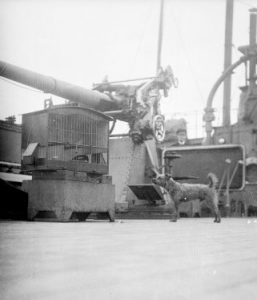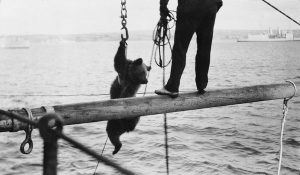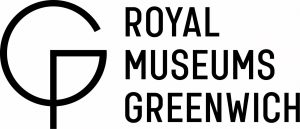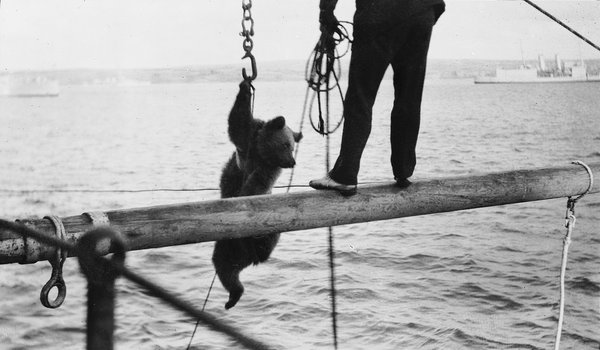Maritime Animals was a two and half day conference organised by the Kent Animal Humanities network and supported by the Centre for Studies in the Long Eighteenth Century, the Centre for Victorian Literature and Culture, and the Centre for Colonial and Postcolonial Studies in the School of English at the University of Kent that took place at the national Maritime museum, Greenwich from 25-27 April 2018. Information about the event and videos of keynote speeches are archived below.
Keynote speakers
Thom van Dooren and William Gervase Clarence-Smith
Featuring films by Jessica Sarah Rinland

Napper the magpie mascot with Chum (?) the terrier, on board HMS Aurora (1913). © National Maritime Museum, London.
In maritime narratives of humans, ships and the sea, animals are too often absent, or marginalised in passing references, despite the fact that ships once carried, and were populated by, all kinds of animals. Horses, mules and other ‘military’ animals crossed the sea to their battlefields, while livestock were brought on-board to be killed and eaten. Sailors and passengers kept animal companions, ranging widely from cats and parrots to ferrets and monkeys. Animal stowaways, such as rats, termites and shipworms, did tremendous damage to ships’ structures and stores, especially during the age of sail. Rats also emerge from the archives as seafarers, ‘colonisers’ and explorers alongside their human counterparts. Moreover, countless animals – seabirds, dolphins, porpoises, etc. – would visit and accompany ships, filling many sea narratives with the wonder of oceanic animal encounters.
The conference seeks to shed fresh light on maritime history by placing animals centre stage. Papers are sought which uncover all aspects of animals’ involvements (and entanglements) with ships and their activities. For instance, what roles did animals play in famous maritime episodes? What were the experiences of animals on board ships, and to what extent is it possible to recover them? In what ways were managing, sharing with, and caring for, animals important concerns of ships’ crews? What were the policies and procedures regarding keeping animals on board, and how did the presence of animals affect maritime practices? Moreover, the conference will explore the impact of sea-faring animals – whether political, economic, cultural, or environmental – as maritime activities have knitted the world ever more closely together. What roles have animals played in colonial encounters and voyages of discovery, for instance? And how have animals functioned as cultural agents as well as commodities?
Liza Verity’s Animals at Sea (2004), a collection of animal photographs from the National Maritime Museum, has demonstrated that pets and animal mascots, affectionately regarded as shipmates, played a significant role in bringing a ship’s human community together. The conference will build on this book, while also going beyond a focus on the role of animals in mediating human shipboard communities to explore animal and human relationships at sea more widely. We call upon the power of story-telling to repopulate maritime history with animals, by telling, and listening to, surprising stories about them.

‘Trotsky’ the bear being lifted outboard for transfer to HMS Ajax from the Emperor of India, 1921. © National Maritime Museum
E-mail: K.Nagai@kent.ac.uk
‘Animals at sea’ display: https://www.rmg.co.uk/discover/behind-the-scenes/blog/animals-sea


